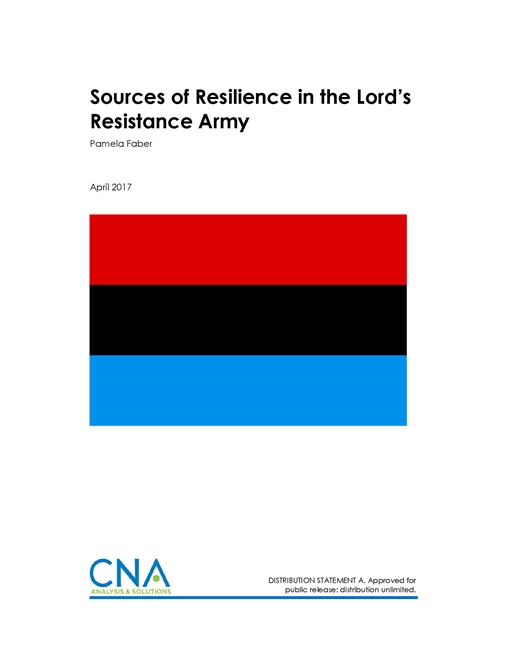Joseph Kony, the charismatic leader of the Lord’s Resistance Army (LRA), has led one of the most enduring rebel insurgencies in sub-Saharan Africa. Kony’s brutality toward civilians, including the use of child soldiers and sex slaves, and his destabilizing impact on central and eastern Africa, has been the focus of attention from the media, non-governmental organizations (NGOs), and numerous governments since the late 1980s. This attention has led to concerted efforts to defeat the LRA and capture or kill Kony by multiple partners, including the African Union (AU), Uganda, and the United States. Partially as a result of these efforts, the LRA has been effectively degraded from a group that was once able to kill over 100,000 people, abduct tens of thousands, and displace over 2 million people in Uganda from 1987 to 2006, to one that currently comprises fewer than 150 core combatants in survival mode on the borders of the Democratic Republic of Congo (DRC), the Central African Republic (CAR), Sudan, and South Sudan.
The LRA is a vestige of the group it once was. Even in its weakened state, however, it has proven resilient. Militants continue to abduct and kill civilians, and are increasingly involved in cross-border smuggling and criminal networks. Despite rumors of his ill health, Kony’s ability to evade capture also symbolizes the group’s endurance. Though Kony will eventually be killed, be captured, or die, the LRA’s operational model for survival may continue to function after Kony’s death through a successor and/or be co-opted by other actors in the region. Understanding the survivability and resilience of the LRA is necessary not only for defeating Kony and the LRA, but also for combating future groups who may adopt the LRA’s strategies.
This paper argues that the LRA has survived, despite being hunted by multiple militaries over the course of nearly three decades, because it has developed two major points of resiliency. First, Kony as an individual and the LRA as a whole have successfully positioned themselves within the nexus of four interconnected conflicts in the region, rendering a successful counter-LRA strategy very difficult to achieve. Second, Kony and the LRA have adapted their tactics in response to changing circumstances. The LRA can shift from an active insurgent group to a discrete criminal network in accordance with changes in its capabilities and environment. This resilience can lead to regeneration of the LRA if the group’s ability to withstand internal divisions and environmental challenges outlasts the resolve of the international community to defeat Kony and his group.
The remainder of this paper will be organized as follows. We open with a section on the emergence of the LRA in Uganda, focusing on its leader, ideology, and tactics. This section also details counter-LRA activity to date. We then identify two sources of LRA resilience. Following that, we discuss the LRA’s points of weakness. We close by identifying how the resiliency of the LRA can have implications for other armed groups.
Download reportDISTRIBUTION STATEMENT A. Approved for public release: distribution unlimited.
Details
- Pages: 44
- Document Number: DOP-2017-U-015265-Final
- Publication Date: 4/10/2017
